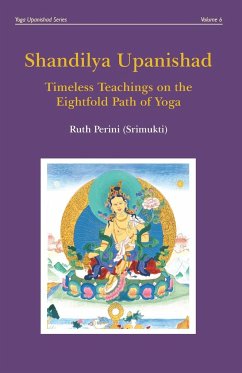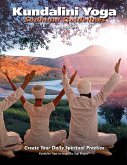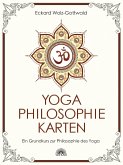Shandilya Upanishad is the sixth volume of the Yoga Upanishads series. The ¿¿¿¿ilya Upani¿ad is connected with the Atharva Veda. It commences with the yogin invoking R¿ma to guide him along the eightfold path of yoga to liberation.In the first verse of chapter one, ¿¿¿¿ilya asks the Lord Atharvan to instruct him in the eight-limbed path of yoga, with the aim of reaching the true Self. ¿¿¿¿ilya himself was a Rishi with many disciples, and was the progenitor of the ¿¿¿¿ilya lineage. Atharvan was a Vedic rishi, who, together with Angiras, is said to have revealed the Atharva Veda, and was the first to perform yagña, fire oblations. The first two sections describe the foundations of yoga, yama and niyama, external and internal restraints. Section three describes the eight ¿sanas, which, as well as having physical, mental and energic benefits, prepare the body for sitting still for a long time in meditation without discomfort. Later sections describe the fourteen main n¿¿¿s, ten v¿yus, mäipura cakra and ku¿¿alin¿ of the subtle or pranic body. The methods of purification of the n¿¿¿s are described in great detail, as purification is considered necessary for the higher stages of concentration (dh¿rä¿) and meditation (dhy¿na). The prerequisites for yoga practice are listed. A meditation on agni mä¿ala is given. Pr¿¿¿y¿ma is defined as AUM, and the practice of n¿¿¿ ¿odhana pr¿¿¿y¿ma with emphasis on kumbhaka and the effects of the practice are described in detail.Teachings are then given on khecar¿ and vai¿¿av¿ mudr¿, control of pr¿¿a, awakening ku¿¿alin¿, säyama, praty¿h¿rä, dh¿rä¿, dhy¿na and sam¿dhi. The necessity of both yoga and jñ¿na for liberation is emphasised. Chapter two has sections on knowledge of Brahman, creation of the universe, the names of Brahman, and Datt¿treya.
Hinweis: Dieser Artikel kann nur an eine deutsche Lieferadresse ausgeliefert werden.
Hinweis: Dieser Artikel kann nur an eine deutsche Lieferadresse ausgeliefert werden.








